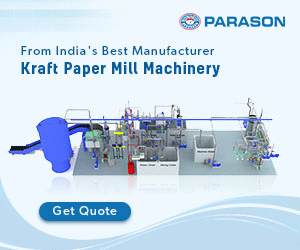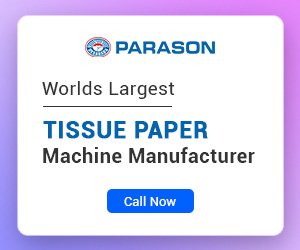When several paper industry enthusiasts sit down in a conference, there are tremendous ideas generated about the paper mill business.
Before starting a paper mill, you must have a clear picture in your mind of how this project is going to work. This picture is termed as the vision of your paper mill.
What is the ideal process to start a successful paper mill? Where do you begin?
Read these 8 steps to understand the complete process of paper mill set up.
You might be interested in: How To Increase Tissue Paper Softness
1. Identifying your customers
The ideal first step is starting a paper mill is identifying who you are going to serve? Whether you are going to serve the kraft paper dealers, tissue paper dealers, printing paper dealers, or the corrugation dealers?
Now, as you are starting a paper mill, your customers are going to be those people who trade in papers and paper products. Your customers can be paper suppliers, paper bags suppliers, eco-friendly tableware suppliers, box packaging industries, packaging suppliers, and so on.
For example, it may happen that you have already decided that you are going to manufacture tissue paper. In this scenario, your target customers are the tissue paper suppliers, paper napkin dealers, toilet paper dealers, facial tissue paper dealers, paper towel suppliers, wrapping tissue suppliers, table napkin suppliers, specialty tissue paper dealers, etc.
2. Determine your production goals
Now that you have finalized your target customers, your second step is to decide your production goals. Production goals are the numbers like what will be the capacity of your production?
You need to fix the minimum and maximum production capacity of your paper mill. Your paper mill may range from 50 TPD to 500 TPD. This depends on the investment you are ready to make.
If your investment budget is high, you can certainly go for a higher capacity paper mill.
3. Where is your raw material coming from?
The third step is to find out the dealers and suppliers of the raw material for your paper mill. Study the types of raw material that produce the best quality of the paper.
Raw materials can vary on the type of paper you are going to produce. You may choose different raw materials for different types of paper manufacturing.
The dealers and suppliers of the raw material must be reliable and known. The raw material supplier should be nearer to your paper mill.
4. Select Paper Machine Manufacturer
Fourth but the most important stage is selecting a knowledgeable and experienced machine supplier. This is very important as the quality of your paper is going to depend on the machine that you use in the production. Approaching the best paper machine manufacturer and supplier will gain you a plus point in improving the quality of your paper.
Selecting a well-established paper and pulp machine supplier is very important as the paper mill business is highly dependent on the quality of the end product.
Have a detailed meeting with your machine providers on what is your production capacity expectation and get the machines accordingly.
5. Setting Up Your Paper Mill
Finalize a good place to plant your mill. Papermill needs to be on the ground floor as it involves a lot of import and export that needs regular loading and unloading of material.
Select a location that is easily reachable for your employees and workers and which is at a short distance from the dealer and also from the raw material provider.
Once the location is finalized, begin with the construction of your paper mill and make it ready for manufacturing.
6. Brand Awareness
Once you start manufacturing the best quality of paper, your paper mill gains a recognizable name in the market. This name is the brand of your paper. You should always keep in mind that the quality of your paper is the identity of your paper mill.
You can increase your brand awareness by using online means like social media, sending out emails, publishing your paper mill news online, etc. You can also publish articles on famous paper industry magazines.
Brand awareness helps to grow your business and gains new customers, thus increasing the scope of your paper mill.
Also read: How These New 4P’s Can Boost Your Paper Mill Production
7. Competitor Analysis
The seventh step brings you to doing in-depth competitor analysis. It is knowing who and how are your competitors. Your competitors are those paper mill that is producing the same product as you are.
First, perform research and get to know who are your competitors. Select the top 3-5 competitors and study their manufacturing and marketing strategies. Once you are completely aware of how your competitor works, try to implement their best practices in your business.
You can also know the production structure of the top-performing papermills in the paper industry and try to implement it in your mill.
8. Appropriate tracking of business metrics
We have reached the final stage! Tracking of business metrics! It is very essential as it keeps the details of where your business is going. Business metrics are the accounts and statistics of your business. You should maintain a detailed report of every order that is imported and exported from your papermill.
The study of business metrics is done to figure out the improvisions in your paper mill.
Studying the statistics of other paper mills will also help you in understanding and unlocking new business strategies.
So this was the guide on how to set up your successful paper mill in 2021. If you have any more points you would like to share with us, please submit them in the comment box below.
Thank you for reading and have a great year!





